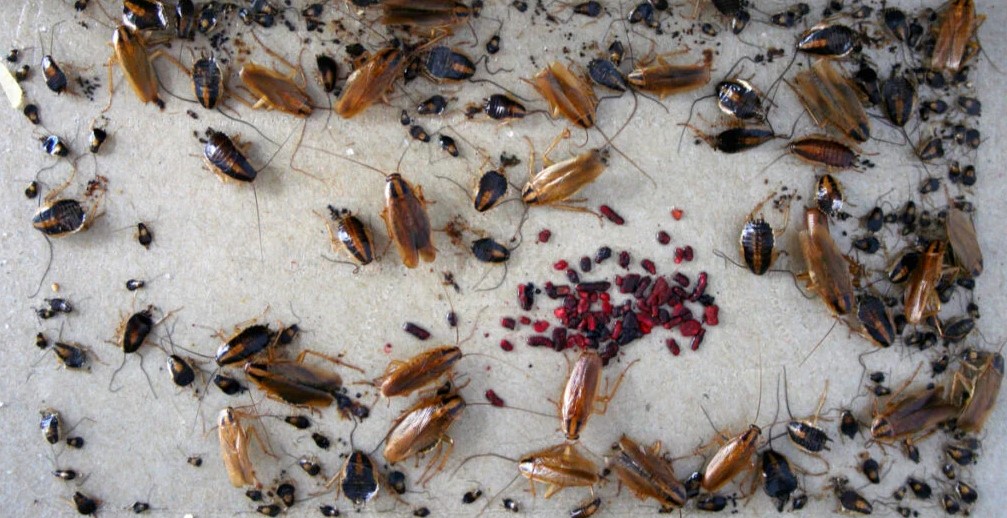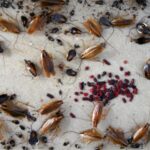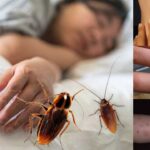Cockroaches are among the most common and resilient pests found in homes, restaurants, and businesses around the world. While these insects are unpleasant to encounter, one often overlooked indicator of a cockroach infestation is their droppings, or cockroach poop. Recognizing the signs of cockroach feces can be crucial in identifying an infestation early and preventing further problems. In this article, we’ll dive into what cockroach poop looks like, what it can tell you, and how to deal with it effectively.
What Does Cockroach Poop Look Like?
Cockroach poop can vary in appearance depending on the species of cockroach and its diet. However, there are some common characteristics that make it recognizable:
- Size: Cockroach droppings are typically small, ranging from 1-2mm in length.
- Shape: The feces usually resemble tiny, cylindrical pellets or grains of rice.
- Color: The color of cockroach poop can range from dark brown to black, sometimes with a shiny or glossy appearance, particularly if the cockroaches have been consuming food.
- Texture: Cockroach droppings are dry and granular in texture. When they’re fresh, they might appear slightly moist but become dry and crumbly as they age.
While cockroach poop might look like other types of waste, its specific size, shape, and color can help distinguish it from the droppings of other insects or animals. It’s often found in areas where cockroaches have been actively feeding or nesting.
Common Locations of Cockroach Feces
One of the most telling signs of a cockroach infestation is finding their poop in various areas of your home. Cockroaches are nocturnal creatures that prefer dark, hidden places, so their droppings are often found in:
- Kitchen and Pantry: Since cockroaches feed on food scraps, grease, and sugary substances, you are most likely to find cockroach poop in kitchen drawers, under the sink, in cupboards, behind appliances, and in pantry areas where food is stored.
- Bathrooms: Cockroaches are also attracted to moisture, so they often leave droppings in bathrooms, particularly around sinks, bathtubs, and behind toilets.
- Basements and Attics: These dark and quiet spaces offer ideal hiding spots for cockroaches, and their droppings can often be found in corners, behind stored items, or in cracks and crevices.
- Walls and Baseboards: As cockroaches travel around your home, they might leave a trail of droppings along baseboards, wall corners, and near their nests.
- Near Nests: Cockroaches will often leave droppings near their nests, which are typically hidden in cracks or holes in walls, under furniture, or behind appliances.
What Does Cockroach Poop Tell You?
The presence of cockroach droppings is a clear sign that you have an infestation in your home. Cockroach feces can provide valuable information about the extent of the infestation, the health risks associated with it, and how to address the issue:
- Extent of the Infestation: The more feces you find, the larger the population of cockroaches. A small number of droppings may indicate a limited infestation, but if you discover large quantities, it could mean that the problem is more widespread. Regularly finding cockroach poop in different areas of your home is a strong indicator of an active infestation.
- Health Risks: Cockroach droppings are not just unsightly – they can pose serious health risks. Cockroaches carry bacteria such as Salmonella, E. coli, and Staphylococcus, which can spread through their feces. When cockroach poop is disturbed, it can release particles into the air, potentially leading to allergic reactions, asthma attacks, and the spread of infections. The droppings themselves can also trigger food poisoning if contaminated food is ingested.
- Contamination of Food: Cockroaches tend to defecate wherever they roam, and if they have access to food items, their feces can easily contaminate it. This is especially a concern in kitchens or food storage areas, where cockroaches can leave their droppings on countertops, inside cabinets, and even in food packages.
- Attracting Other Pests: Cockroach feces can attract other pests, such as ants and rodents, which may be drawn to the scent. If left untreated, a cockroach infestation can quickly lead to a more extensive pest problem in your home.
How to Identify a Cockroach Infestation Using Poop

If you suspect that you have cockroaches in your home, the presence of droppings is one of the most obvious signs. Here’s how to identify an infestation based on cockroach poop:
- Amount of Droppings: A small number of droppings may suggest a recent or minor infestation. However, a significant buildup of droppings over time indicates that cockroaches are actively residing and reproducing in your home. This can help you estimate the level of infestation.
- Consistency and Location: Cockroach droppings found in food storage areas, bathrooms, and hidden spaces around the home suggest that the roaches are foraging for food and moisture. You may also notice feces near their nests or trails of feces leading to a hidden area of infestation.
- Signs of Smear Marks: Older cockroach droppings can sometimes leave a residue or smear mark if they come into contact with moisture. This residue may have a strong, unpleasant odor.
Dealing with Cockroach Poop: Cleaning and Prevention
Once you’ve identified cockroach poop in your home, it’s crucial to take immediate action to clean up the droppings and prevent further contamination. Here’s how to handle the situation:
- Cleaning Cockroach Feces:
- Wear gloves and a mask when cleaning up cockroach droppings to avoid exposure to potentially harmful bacteria and allergens.
- Use a damp cloth or paper towel to wipe up the feces, being careful not to spread it further.
- Clean the area with a disinfectant or a solution of bleach and water to kill bacteria and sanitize the surfaces.
- Avoid sweeping or vacuuming up cockroach poop, as this can release particles into the air and cause respiratory issues.
- Preventing Cockroach Infestations:
- Seal cracks and crevices around windows, doors, pipes, and walls to prevent cockroaches from entering your home.
- Maintain cleanliness by regularly wiping down surfaces, especially in the kitchen, and removing food scraps and spills promptly.
- Store food in airtight containers to eliminate food sources for cockroaches.
- Fix water leaks around sinks, pipes, and bathrooms to eliminate moisture that attracts cockroaches.
- Use traps and baits to monitor and reduce cockroach populations.
- Call Pest Control: If cleaning and preventive measures do not resolve the infestation, it’s important to contact a professional pest control service. A pest control expert can assess the level of infestation, eliminate the roaches, and provide solutions to prevent future problems.
Conclusion
Cockroach poop is not only a sign of a potential infestation but also a warning about the health risks associated with these pests. By recognizing the appearance and locations of cockroach droppings, you can take early action to address the problem and protect your home and family from contamination. Maintaining a clean environment, sealing entry points, and using pest control measures can help keep your home free from cockroaches and their harmful droppings. Early intervention is key to preventing a larger infestation and ensuring a safe and hygienic living space.



